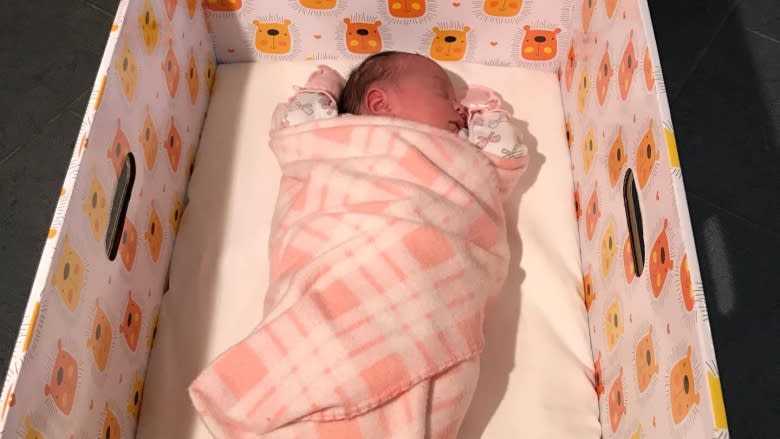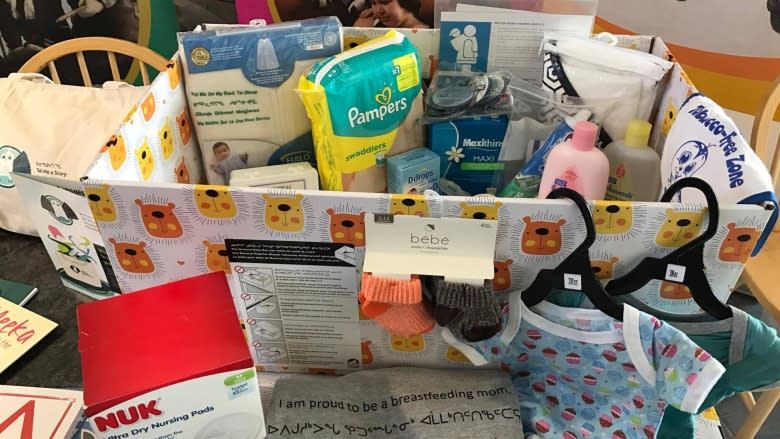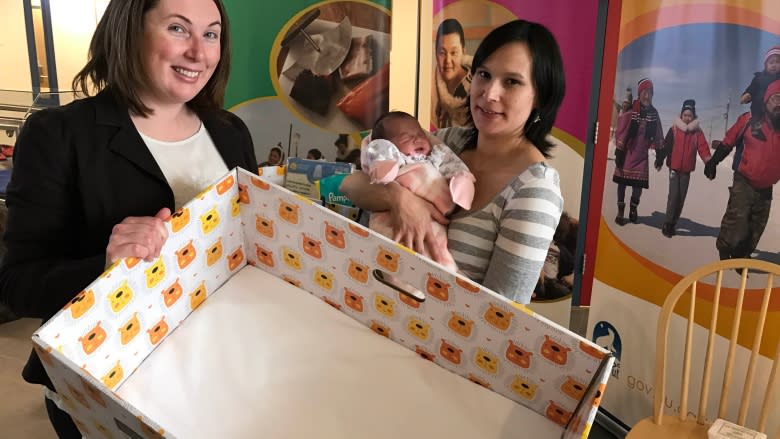Nunavut adopts Finland's baby box program to reduce infant mortality
Nunavut is giving out more than 800 baby boxes to parents of newborns in an attempt to reduce the territory's high rate of infant mortality.
The territory's birth rate is the highest in Canada and about 850 babies are expected to be born in Nunavut in 2016-2017. Nunavut also has the highest rate of infant mortality in Canada with a rate five times higher than the national average.
"It's an issue that any mom or any parent would take to heart," says Tara Macaskill, the mother of a two-year-old and the health department lead on the baby box program.
The baby box program came from Finland, where it began in 1939. In that country it helped reduce the infant mortality rate to less than two in 1,000, from 90 in 1,000.
The box is packed with an assortment of baby goods, such as diapers and a onesie, as well as breastfeeding aids, and children's books in Nunavut's four official languages.
The box itself doubles as baby's first bed and comes equipped with a mattress and sheet to create a cosy crib, which is approved by Health Canada for infant sleep. It can help reduce sleep-related causes of infant deaths, such as sudden infant death syndrome.
Emily Shoapik is the mother of a two-week-old baby girl, Rachel Ipeelie Shoapik. She was given a baby box to try out this week.
"She slept good in there and I felt safe for her in there," said Shoapik.
She added that all the stuff in the box is useful and any little thing helps when you're busy with the exhausting task of caring for a new life with very little sleep.
The baby box even has a few items for mom and dad such as condoms to help with family planning and brochures to educate new parents about infant care and the risks of smoking.
The contents of the box retail for more than $500, although most of the items cannot be found in Nunavut.
The Department of Health is handing out boxes to 25 communities through health centres in 2016-2017. If successful, the program may continue.
The program, delivered jointly by the Nunavut departments of Health and Education has been piloted in Alberta and is running with donations from companies in Ontario.




